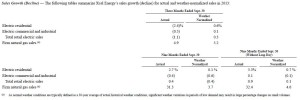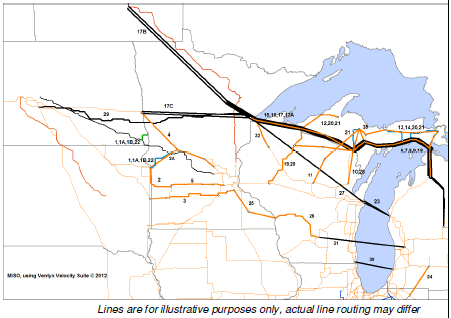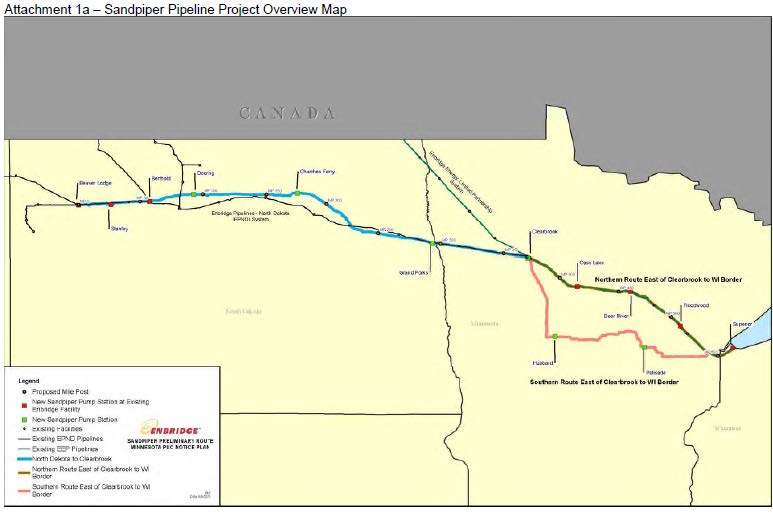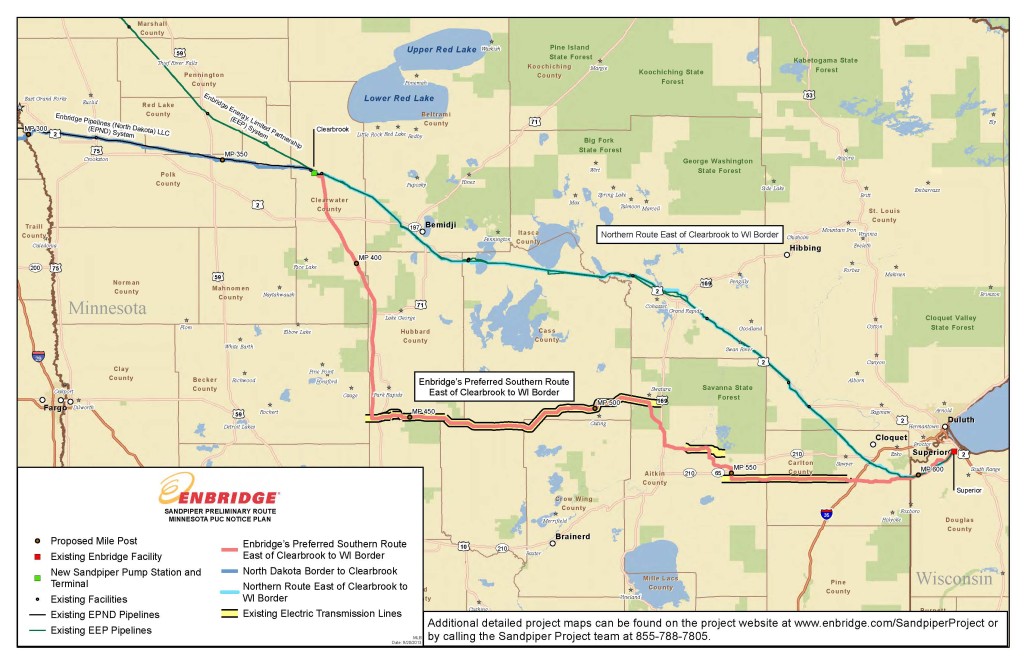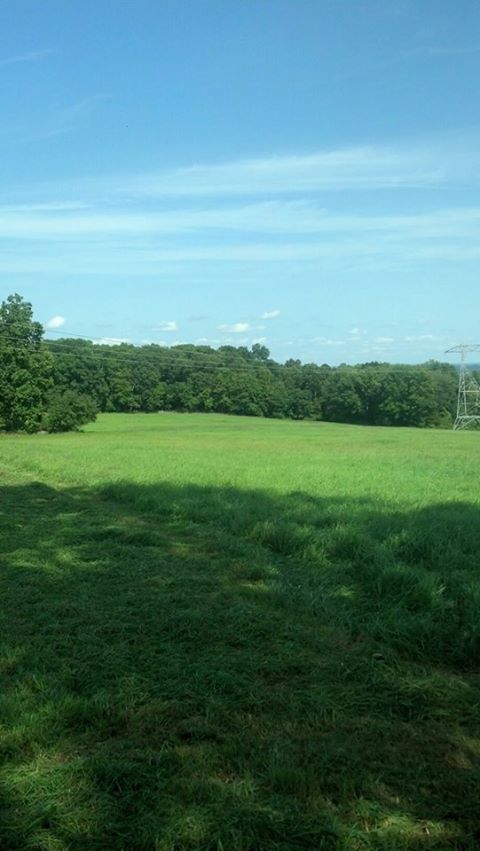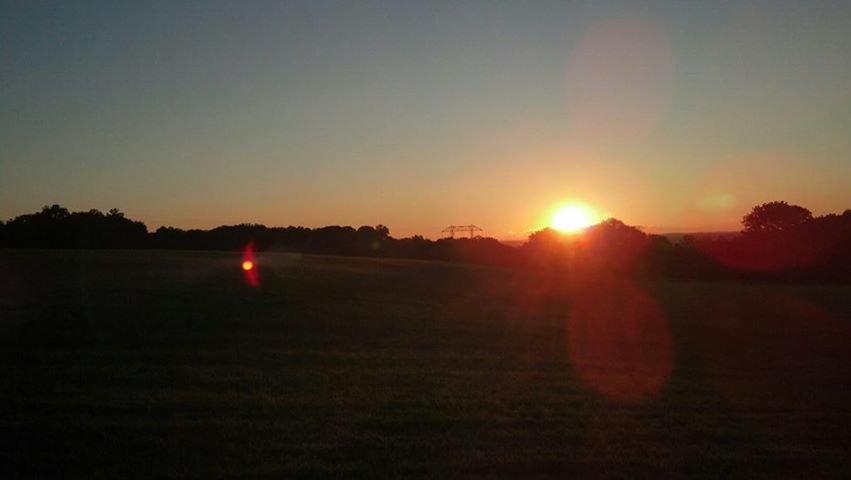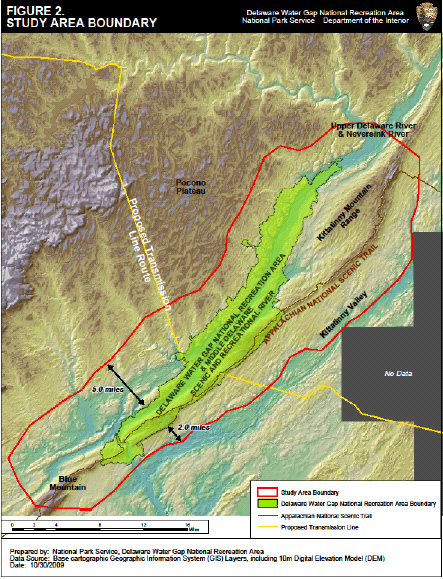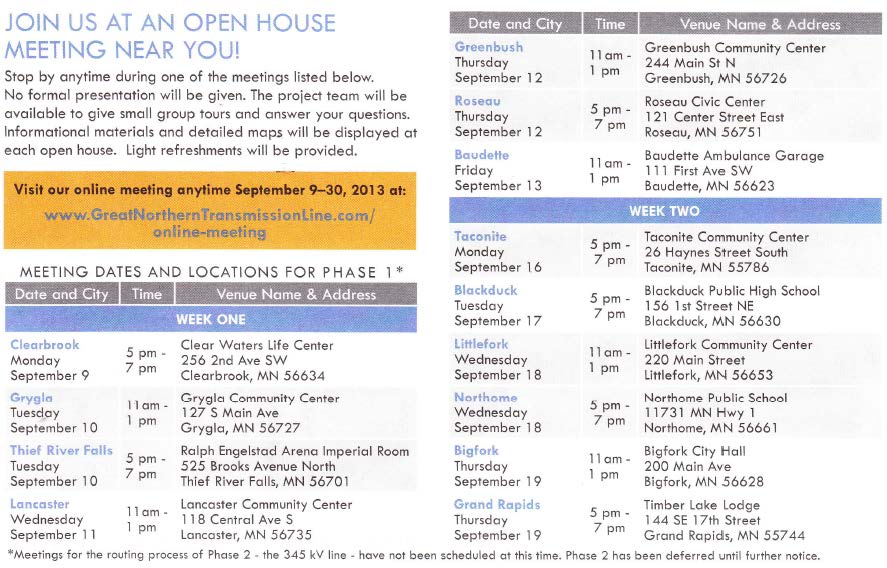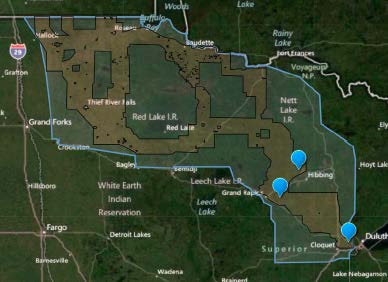Electric demand is down… down… DOWN!
October 28th, 2013
What’s new? Well, Xcel Energy has announced its 3Q results and the 2013 demand just keeps going down!
From Seeking Alpha, the 3Q call transcript (emphasis added):
Kit Konolige – BGC Partners, Inc., Research Division
On the — your sales growth outlook, I believe you said that you are expecting 0% to 0.5% in 2013. Can you discuss the breakdown by states on that and maybe any color about commercial versus industrial versus residential? And also give us a view of the longer term sales outlook that you’re seeing at this point?
Teresa S. Madden – Chief Financial Officer and Senior Vice President
Well, sure, Kit. Let’s start with the 2013 by the states. Minnesota, we’re still projecting a decline of about 1.2%. In NSP-Wisconsin, just a slight decline. And then the other 2 jurisdiction, PSCo slightly up and SPS at about 1.2% range. But all of it netting to within the — up to 0.5%. When we look to the future, we’re looking at about, as we indicated in our guidance up to 0.5%, those are narrowing, not such a great degree in terms of the decline in NSP-Minnesota. In terms of the various classes of customers, it does vary by jurisdiction. I will say that C&I, we see the most growth in Texas with the oil and gas industry boom.
CLICK HERE FOR FULL TRANSCRIPT.
Let me repeat that tidbit:
Minnesota, we’re still projecting a decline of about 1.2%. In NSP-Wisconsin, just a slight decline.
And as we know too well, the CapX 2020 transmission project taking over Minnesota is based on their wishful-thinking projections of a 2.49% annual increase.
From Xcel Energy’s own investor page (click to enlarge):
Here’s the full 10-Q (above from p. 50):
Someone remind me — why are we paying to build this CapX 2020 transmission project?
The rest of the story… ???
September 27th, 2013
Back to transmission lines and pipelines…
Looking at the footprints, at what’s proposed, it makes sense, meaning that it fits together, the rest of the story. But does it? There’s the Not-So-Great Northern Transmission Line (Minnesota Power’s Great Northern Transmission Line), and there’s the Enbridge Sandpiper pipeline. But is it all connected? Or is there even more in store? How much do these companies want?
The Not-So-Great Northern Transmission Line:
And there’s the Enbridge Sandpiper pipeline:
And then there’s this, the Allete Energy Corridor:
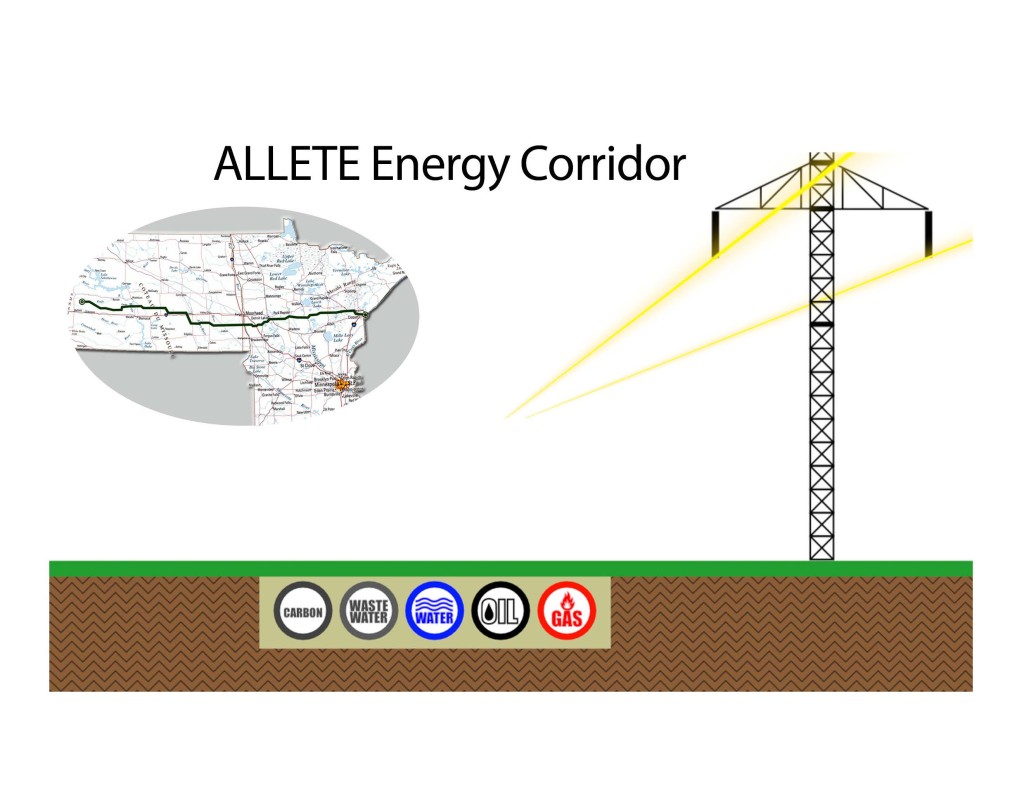 There are differences… the Allete Energy Corridor is further south, headed straight east to Duluth. But look at the map that is in their Notice Plan, the “Preferred Route.” It’s also south:
There are differences… the Allete Energy Corridor is further south, headed straight east to Duluth. But look at the map that is in their Notice Plan, the “Preferred Route.” It’s also south:
Do they need both? Is this all one and the same project(s)? As we say in transmission, it’s all connected. So do tell, what’s the connection with the two announced projects, one transmission and one pipeline, and this “energy corridor.” Enbridge must submit more detailed maps for the Notice Plan, so we should see soon their “preference.”
Meanwhile, what’s Allete up to? Seems it started over two years ago:
And yesterday:
ALLETE Energy Corridor Would Offer Efficient Movement of Multiple Products, from Flared Gas to Water
by Business Wire via The Motley Fool Sep 25th 2013 12:30PM
Updated Sep 25th 2013 12:32PM
ALLETE Energy Corridor Would Offer Efficient Movement of Multiple Products, from Flared Gas to Water to Carbon
N.D. governor supports comprehensive solution
BISMARCK, N.D.–(BUSINESS WIRE)– ALLETE (NYS: ALE) today laid out its vision for a comprehensive energy transportation corridor that could help provide solutions for the movement of natural gas, petroleum products, water and wastewater, wind energy and future sequestered carbon across a coordinated, shared right-of-way.
The energy corridor’s backbone would follow an existing 465-mile path that contains a direct current transmission line running between Center, N.D. and Duluth, Minn. This 250-kilovolt line, purchased in 2009, is used to transmit electric energy from the lignite-fired Young Generating Station in Center and the nearby Bison Wind Energy Center to Duluth, Minn., home of the nation’s busiest inland seaport. The energy corridor would expand a pathway along strategic portions of the existing right of way to minimize land use and optimize energy delivery infrastructure development within North Dakota.
A top priority of the ALLETE Energy Corridor is to develop an extension of the existing energy delivery path some 60 miles westward to the burgeoning Bakken shale oil fields of west-central North Dakota. ALLETE subsidiary ALLETE Clean Energy has been working diligently with potential partners to study the co-location of facilities and assess the capital needs for the Bakken link. It is envisioned that various lengths of the corridor would be used for different purposes.
“We see the ALLETE Energy Corridor as a comprehensive infrastructure solution in North Dakota that could serve many products and producers across the region,” said ALLETE President, Chairman and CEO Alan R. Hodnik. “We value Gov. Dalrymple’s support of our vision and appreciate him bringing it forward to other members of the state’s energy sector.”
“ALLETE has been invested in North Dakota for decades,” Hodnik added. “We are confident that our rich history of partnering with others can help forge creative solutions to today’s new challenges facing energy markets in the Upper Midwest.”
North Dakota Governor Jack Dalrymple voiced support of the ALLETE Energy Corridor today in remarks to EmPower North Dakota, a commission established to develop a comprehensive energy policy for the state. He said the energy corridor concept is a prime example of the way business can creatively tackle pressing problems like the proliferation of flare gas at oil wells dotting the Bakken field, and the traffic tie-ups caused by too many trucks and trains hauling petroleum products to market.
“The ALLETE Energy Corridor is a breakthrough opportunity to reduce flaring by locating a major natural gas pipeline from the Bakken to eastern markets,” Gov. Jack Dalrymple said. “While the corridor would support the transfer of many energy resources, it could also carry carbon dioxide from coal-fired power plants to western North Dakota for use in advanced oil recovery.”
The ALLETE Energy Corridor could accommodate several pipelines capable of transporting natural gas that would otherwise be flared, as well as wastewater and carbon sequestered from fossil fuel generation. Future wind expansions could also benefit.
“We look forward to working with project developers and government officials to implement this vision,” said Eric Norberg, president of ALLETE Clean Energy. “We have an opportunity to pursue investments that will help solve some current issues and lay the groundwork for more efficient movement of energy products, water and wastewater in the future.”
More information about the ALLETE Energy Corridor can be found www.ALLETECleanEnergy.com.
ALLETE, Inc., an energy company based in Duluth, Minn., has a well-established presence in North Dakota that includes BNI Coal, now undergoing a major expansion to extend coal delivery to its partner Minnkota Power, and the Bison Wind Energy Center, where work on a $350 million fourth phase is scheduled to begin this year. ALLETE’s energy businesses also include Minnesota Power, Superior Water, Light & Power Co. and ALLETE Clean Energy. More information about the company is available at www.allete.com.
The statements contained in this release and statements that ALLETE may make orally in connection with this release that are not historical facts, are forward-looking statements. These forward-looking statements involve risks and uncertainties and investors are directed to the risks discussed in documents filed by ALLETE with the Securities and Exchange Commission.
Photos/Multimedia Gallery Available: http://www.businesswire.com/multimedia/home/20130925005251/en/
Susquehanna-Roseland transmission defiling New Jersey
September 5th, 2013

Photo by Bruce A. Scruton/New Jersey Herald
I hate to be the bearer of bad news, but this has to be reported. There will be more bad news about transmission on the NoCapX 2020 site about that big web of transmission lines in Minnesota. Here, now, it’s about the Susquehanna-Roseland transmission through Pennsylvania and New Jersey.
People in the Midwest do not have a clue how beautiful New Jersey is. We think of Newark (actually, I liked Newark, spent time there for the hearing before Board of Public Utilities), we think of Elizabeth, Bayonne, we think of concrete, boarded up buildings, extreme poverty, desloation, and maybe Atlantic City which has problems of its own, and while that’s all a part of New Jersey, we need to be aware of not just Newark but of Newton… of Sparta, of Stillwater, New Jersey, which is quite similar to Stillwater, Minnesota. Get acquainted with the rolling hills, farm fields, the pines and granite of northwestern New Jersey.
Special thanks to Dave Slaperud of Stop the Lines and Scott Olson and his Route B Info list for keeping the world informed.
What’s the Susquehanna-Roseland line? Once more with feeling, that sinking feeling…
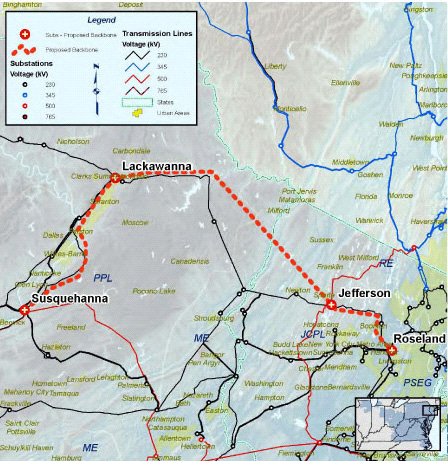
This post by Bill Wolfe has some beautiful and disturbing photos, the beautiful New Jersey countryside they’re tearing up as we speak:
Lisa Chammings, of Stillwater, New Jersey, has a hayfield that they’re ripping up, despite promises that she could mow the hay underneath. It’s been raining, everything’s wet, no way to get hay, and, well, see that NJ Herald photo above? That’s her hay field that they’re in!
The transmission towers will be about twice as high, it’s going to be a TRI-BUNDLED 500 kV transmission line. WOW.
The Delaware Water Gap is under siege right now, and will no longer look like this:
Here’s what they’re doing there, running a line between Pennsylvania and New Jersey:
National Park Service sold us all out for $60 million, and is allowing the transmission line to go through. Thanks. Let’s hear it for the public interest.
The Susquehanna-Roseland transmission line is one that President Obama ordered fast-tracked, as if it wasn’t moving along fast enough:
Obama “fast tracks” transmission?!?!?!
Obama’s Transmission BS in the News
What does Obama’s Xmsn push mean?
ROAD TIME!! Not-So-Great Northern Xmsn
August 31st, 2013
Notices were sent of “open house” meetings for the Not-So-Great Northern Transmission Line but guess who didn’t get one! And I’ve spent some time looking at their site, and I can’t find a meeting schedule anywhere. But thanks to two little birdies, we’re in luck!
HEY NOT-SO-GREAT TRANSMISSION:
PUBLISH YOUR OPEN HOUSE SCHEDULE ON YOUR SITE!
I know, what people care about is the map, but it’s hard to see the map, and that’s all we’ve got.
The application has not yet been filed, but it’s working its way toward the Public Utilities Commission. There’s a docket, so you can check to see what all has been filed. Go HERE TO SEARCH DOCKETS and then search for docket number 12-1163.
Now is the time to get involved, at the Certificate of Need stage, because NOW is when they determine “IF” a line is needed, and if it’s deemed “needed,” then it WILL go somewhere and it’s a very difficult struggle. The Certificate of Need stage is a bit more esoteric but it’s where the action is, and in this line in particular, they don’t have much to show as a “need.” It’s a want (as are most, if not all, transmission lines).
Meetings are the second and third week in September. Check out one near you and come on down for coffee and treats to settle your stomach while they explain their plans.
Obama promoting transmission again…
August 12th, 2013
On a bit of a transmission meander lately…
Based on the Fahey/AP articles on transmission lately, I mean really, how often is there anything about transmission in the STrib, I’ve felt something approaching. Perhaps it was the MISO Board of Directors meeting next week in St. Paul (HEY, check this out, you can watch it online, WebEx Information WebEx Password: Sr789456, or even head over to the shindig in St. Paul Hotel!
Then, I was reading the transcript for the PEPCO 2Q Earnings Call (pretty stimulating stuff), where they were talking about the undergrounding in DC:
Seeking Alpha – PEPCO 2Q Earnings Transcript
And here’s a news report and video about it, dig the price, $1.90 – $3.25 a month — that’s reasonable in my cheapskate book:
PEPCO, DC Officials Discuss $1 Billion Underground Wires Plan
That’s exactly what we should be doing. Complaints about “reliability” are distribution line issues, and look at how those utilities out there that are deregulated have cut maintenance to ZERO, think Aug. 13, 2003 (NERC Blackout Report HERE). And as I finish that, I see yet another Fahey/AP article published today, this time about Obama stumping for transmission AGAIN:
As cost of weather related outages rises, White House says grid should be made tougher
So off to the White House, where the PR is about “Protecting the Electric Grid From Increasingly Severe Weather Due to Climate Change” and what’s the real theme? Hey, it’s all about economics!
Economic Benefits of Increasing Grid Resilience to Weather Outages
This builds on his Memorandum earlier this summer:
Which of course builds on his Executive Order promoting transmission and naming projects for “fast tracking,” two of which I was working on at the time, Susquehanna-Roseland and CapX 2020 Hampton-La Crosse. That was:
and the Interagency Rapid Response Team for Transmission
For a list and map of the transmission line pilot projects please visit:
www.doe-etrans.us

